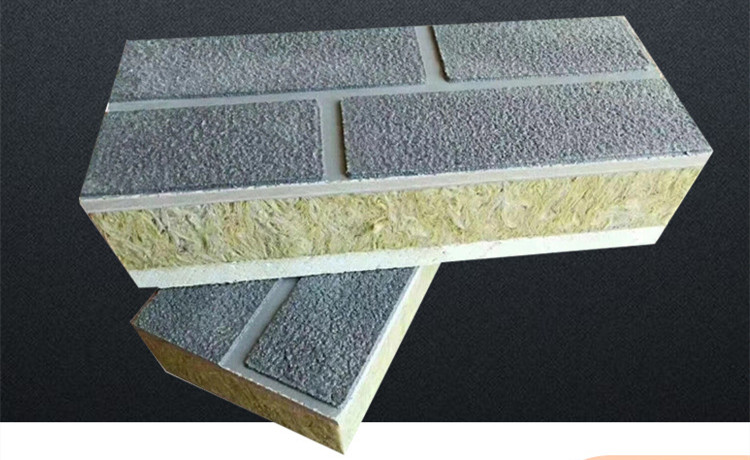China’s building insulation market is booming with innovation, featuring a diverse range of materials vying for attention. While rock wool curtain wall systems have long held a significant share of the market, their limitations are becoming increasingly apparent. In contrast, thermal insulation decorative integrated boards (TIDIBs) are emerging as a strong contender, ready to transform how we approach exterior wall systems.
A Shift from Traditional to Modern Systems
What sets thermal insulation integrated boards apart from traditional dry-hanging marble curtain walls?
Dry-hanging marble systems have been a conventional method of facade cladding. In this process, stone panels are either directly mounted on walls or suspended on a steel framework, secured using metal brackets. This design allows for the stone to bear weight independently of the base wall, creating a visually impressive but labor-intensive and heavy curtain wall system.
In contrast, thermal insulation decorative integrated boards combine insulation and decorative materials into a single, factory-produced panel. These panels integrate thermal efficiency, aesthetic design, fire resistance, and environmental performance, offering standardized quality and rapid on-site installation unaffected by environmental conditions.
Fire Safety: A Growing Priority
Following the implementation of the “High-Rise Civil Buildings Fire Safety Management Regulations” on June 21, 2021 (effective August 1, 2021), new limitations have been placed on external insulation materials for tall buildings. Article 19 strictly prohibits the use of flammable insulation materials and imposes restrictions on systems with cavities between the base wall and decorative layers.
While traditional marble systems can meet fire safety requirements, they require additional fireproof insulation layers, which increase both material usage and construction complexity. TIDIBs, especially those using Class A1 non-combustible rock wool, meet these fire standards out-of-the-box, simplifying compliance and construction.
Supporting Sustainable and Energy-Efficient Building
In an era where energy efficiency and environmental responsibility are becoming national priorities, several cities are introducing stricter facade standards. Beijing, for instance, mandates that buildings achieve 80% energy efficiency on facades. TIDIBs align naturally with this trend, helping push the industry toward standardized, high-performance facade solutions.
Longer Lifespan and Greater Practical Value
While traditional stone curtain walls typically last 15 to 20 years, thermal insulation decorative boards can maintain performance for over 25 years. Thanks to their composite structure and durable materials, they offer a longer lifecycle with lower maintenance requirements.
TIDIBs also feature faster installation. Unlike stone, which requires careful handling and often a wet base surface, integrated boards can be applied to a wide range of substrates, including:
-
Renovated walls (new or old)
-
Interior partition walls
-
Residential exterior facades
-
Public buildings
Furthermore, the insulation core—often made of hydrophobic rock wool—provides excellent resistance to moisture and performs well in both northern and southern China, accommodating vast climate differences across the country.
Cost Efficiency and Construction Flexibility
Natural stone materials come with higher costs—not only in terms of product price but also in transportation, labor, and construction time. Stone requires heavier handling, specialized equipment, and longer on-site workflows, all of which increase the overall project budget.
On the other hand, TIDIBs are lighter, more versatile, and cost-effective, with lower logistics and labor costs. This makes them a more popular and scalable solution for both small and large-scale projects.
Uetersen’s Leading-Edge Solution
Uetersen has developed a high-performance TIDIB system composed of:
-
Base wall
-
Adhesive bonding layer
-
Advanced rock wool insulation core
-
Color-finished decorative panel
-
Anchoring systems
-
Sealing materials
Their use of A1-rated non-combustible rock wool with over 98% hydrophobicity ensures durability and fire resistance. Enhanced anchoring methods firmly bind the panel to the wall, preventing delamination and improving safety—especially on high-rise facades.
A New Era in Facade Technology
As traditional rock wool insulation systems gradually phase out, Uetersen’s thermal insulation decorative integrated boards are positioned to take the lead. They not only simplify compliance with evolving fire and energy standards but also offer significant gains in performance, appearance, and cost-efficiency.
These integrated boards are more than a trend—they represent the future of sustainable, intelligent building design in China.



